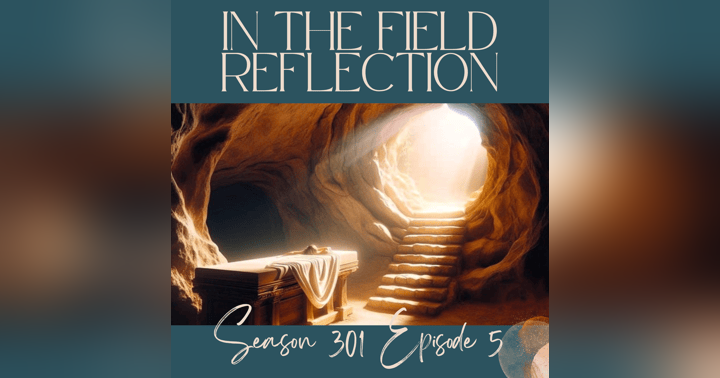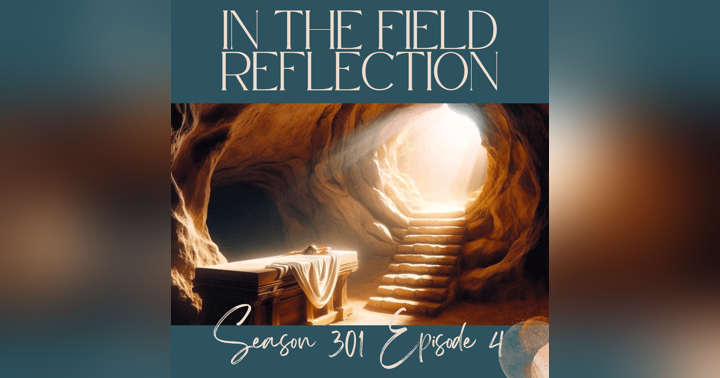From the Tomb to the Testimony: Encounters with the Risen Christ

The journey from crucifixion to resurrection stands as the cornerstone of Christian faith, a narrative that transcends time and continues to transform lives thousands of years later. In our latest Easter mini-series episode, "From the Tomb to the Testimony," we explore the profound moments between Jesus' death and His triumphant resurrection—events that forever altered the course of human history.
The narrative begins at Golgotha, where we witness the final moments of Christ on the cross. The darkened sky at midday served as nature's mourning shroud, and the temple veil tearing from top to bottom symbolized the removal of barriers between humanity and God. As Jesus uttered His final words—"It is finished"—the weight of redemption hung in the air, palpable to those who stood witness to this pivotal moment.
Joseph of Arimathea and Nicodemus, secret followers of Jesus, demonstrated extraordinary courage by approaching Pilate directly to request Jesus' body. This act, while seemingly simple, carried significant risk in a politically charged environment where association with Jesus could lead to severe consequences. Their devotion manifested in the careful preparation of His body with myrrh and aloe—approximately 75 pounds of burial spices, a quantity typically reserved for royalty. The symbolism cannot be overlooked: myrrh, presented at His birth by wise men as a gift for a king, now anointed Him in death, completing a powerful narrative circle.
The tomb itself holds significance within the story—hewn from rock, previously unused, and intended for someone of wealth. Yet it became the temporary resting place for One who transcended earthly treasures. The heavy stone rolled into place symbolized finality, a period at the end of what appeared to be a tragic story. Roman guards, positioned at the insistence of religious leaders who remembered Jesus' prophecy about rising after three days, stood as unwitting witnesses to what would soon unfold.
The atmosphere of the narrative dramatically shifts with the dawn of the third day. As morning approached, the earth trembled, and an angel descended with radiance that illuminated the garden. The mighty stone—sealed and guarded by Rome's finest soldiers—was cast aside effortlessly, revealing an empty tomb. The guards, hardened warriors who had faced battlefields without flinching, collapsed in terror before this divine intervention, highlighting the supernatural nature of what was transpiring.
When Mary Magdalene and the other women arrived to anoint Jesus' body, they encountered instead the emptiness of the tomb and the presence of angels. "Why do you seek the living among the dead? He is not here. He is risen, just as He said." These words initiated a transformative journey from grief to unimaginable joy, particularly for Mary Magdalene, who would soon encounter the risen Christ Himself. Her testimony—"He called me by name"—captures the personal, intimate nature of resurrection faith. What began as a mission to honor the dead became the first witness to life conquering death.
The resurrection narrative speaks powerfully to our human experience of suffering, waiting, and hope. The cross acknowledges our pain; the tomb represents our seasons of waiting and uncertainty; the empty grave proclaims that what appears final may actually be the threshold to new beginnings. This Easter story invites us not merely to remember historical events but to recognize their ongoing relevance in our lives today—where we may be standing at our own crosses, sitting in our own tombs, or perhaps just beginning to glimpse the possibility of resurrection in our circumstances.
The power of this narrative lies in its ability to transform our perspective on suffering and death. What seemed like defeat became the pathway to victory. The very instruments of torture and shame—the cross and tomb—have been converted into symbols of triumph and hope. This radical inversion stands as an invitation to trust that even our darkest moments may be the prelude to unexpected light. The Easter story whispers to every broken heart: death, suffering, and waiting do not have the final word.
















